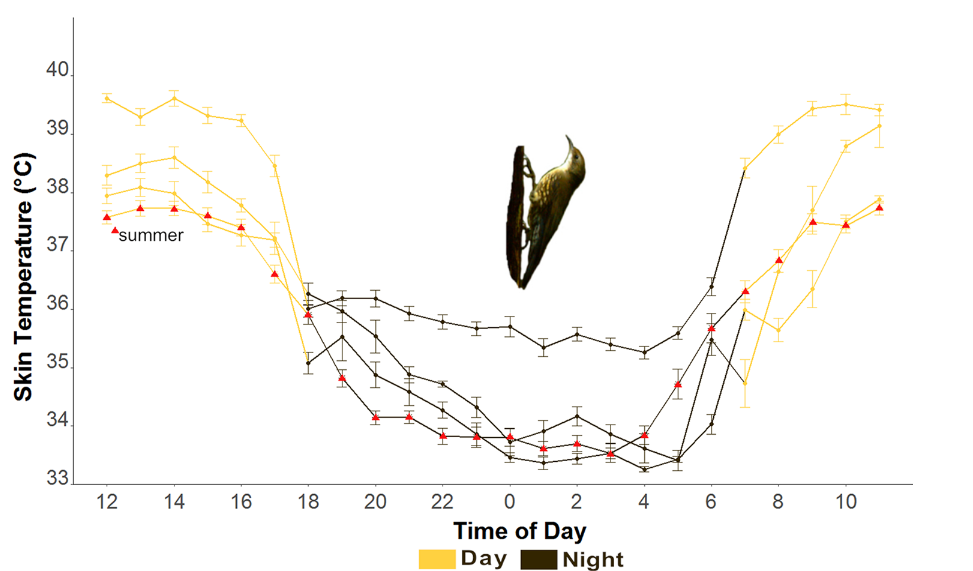You may remember that I've been working on a collaboration with the amazing Yaara Aharon-Rotman and Christa Beckman on a project investigating the use of torpor (a kind of short-term slow down of the metabolism to save energy, like a mini-hibernation) in passerine birds. We spent a lot of time in the woods in Armidale catching birds and equipping them with combined temperature recorders and VHF transmitters. We also took ambient temperature recordings from close to the roosts. We looked at two different species on this project. Eastern Yellow Robins (Eopsaltria australis), it turns out, do actually use torpor and that was the subject of a paper that you can read about here. The other species was White Throated Treecreeper (Cormobates leucophaea) and the results for those little guys have just been published in the Journal of Ornithology (click here for full paper).

The treecreepers (Dougal, Chris, Kelvin and Jane) showed some pronounced drops in body temperature over night but did not quite meet the threshold for what is considered true torpor. One big difference between the robins and treecreepers is in how they roost. The robins, which showed clear signs of going into torpor every night, roost out in the open in a small bush. Treecreepers however, roost snuggled up under a piece of bark or inside a tree hollow. This behavioural tactic for keeping warm and saving energy seems to work pretty well for them as opposed to the physiological strategy of torpor used by the robins. The treecreepers' body temperatures did still drop significantly and it is likely that torpor is part of their tool box if caught out in a cold enough spot.


This work is one of the few times that torpor has been looked at in wild, free-living birds and it was a real joy to be part of as well as a great excuse to hang out in the woods with some good friends (birds and people included).




Comments